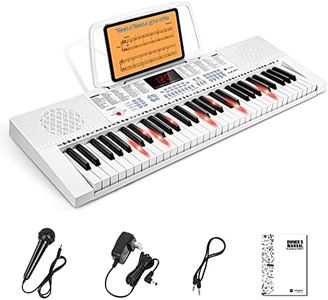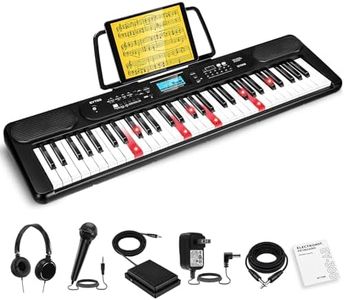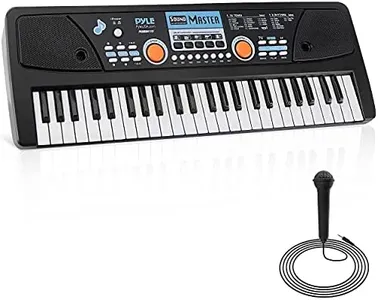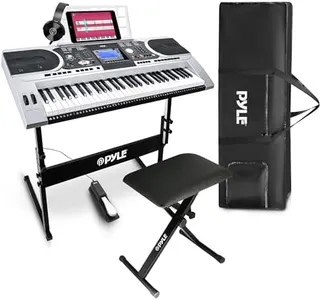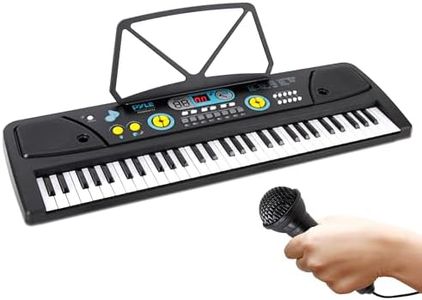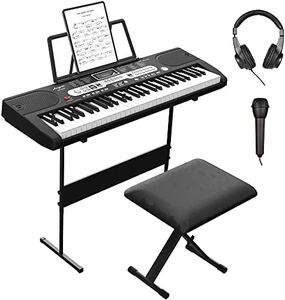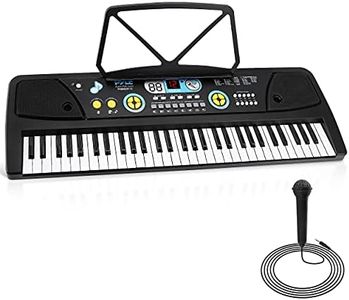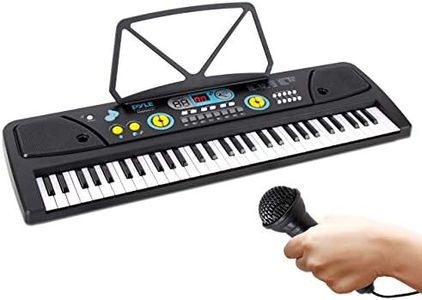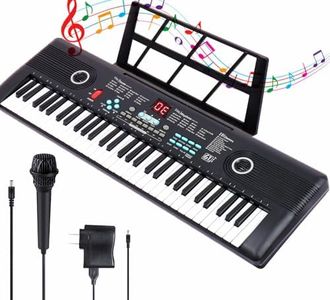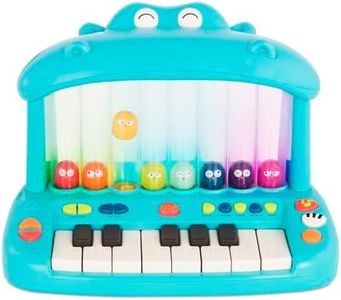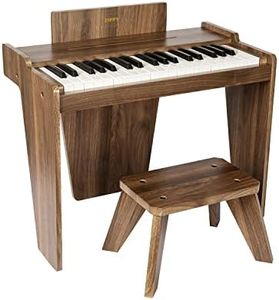We Use CookiesWe use cookies to enhance the security, performance,
functionality and for analytical and promotional activities. By continuing to browse this site you
are agreeing to our privacy policy
10 Best Kids Piano Keyboards 2025 in the United States
Recommended lists
How do we rank products for you?
Our technology thoroughly searches through the online shopping world, reviewing hundreds of sites. We then process and analyze this information, updating in real-time to bring you the latest top-rated products. This way, you always get the best and most current options available.

Buying Guide for the Best Kids Piano Keyboards
Choosing the right piano keyboard for kids can be a fun and rewarding experience. The right keyboard can foster a child's love for music and help them develop their skills. When selecting a keyboard, it's important to consider several key specifications to ensure it meets the needs of the child and provides a positive learning experience. Here are some important factors to consider when choosing a kids' piano keyboard.Number of KeysThe number of keys on a keyboard determines the range of notes that can be played. Full-sized pianos have 88 keys, but for kids, keyboards with fewer keys can be more manageable. Keyboards with 49 or 61 keys are common for beginners. A 49-key keyboard is suitable for very young children or those just starting out, as it is less overwhelming and easier to handle. A 61-key keyboard offers a wider range and can be a good choice for older children or those who are more serious about learning to play.
Key Size and WeightKey size and weight refer to the dimensions and resistance of the keys. Full-sized keys are the same size as those on a traditional piano, which can help children transition to an acoustic piano later on. Smaller keys may be easier for very young children to play. Weighted keys mimic the feel of an acoustic piano, providing resistance when pressed. This can help develop finger strength and proper technique. For beginners, non-weighted or semi-weighted keys are often sufficient, but as the child progresses, weighted keys can be beneficial.
Sound QualitySound quality is crucial for an enjoyable playing experience. High-quality sound can inspire children and make practice more enjoyable. Look for keyboards with good sound samples and a variety of instrument voices. Some keyboards offer built-in speakers, while others may require external amplification. Testing the sound quality in person, if possible, can help ensure it meets your expectations. For beginners, a keyboard with decent sound quality and a few different instrument voices is usually sufficient.
Learning FeaturesMany kids' keyboards come with built-in learning features designed to make learning fun and engaging. These can include light-up keys, built-in lessons, and interactive games. Light-up keys can guide children on which notes to play, while built-in lessons can provide structured learning paths. Interactive games can make practice feel like play. These features can be particularly helpful for younger children or those who are just starting out, as they can make the learning process more enjoyable and less intimidating.
PortabilityPortability refers to how easy it is to move the keyboard around. Lightweight and compact keyboards are easier for children to handle and can be taken to lessons, friends' houses, or on trips. Consider the weight and size of the keyboard, as well as whether it can be powered by batteries for added convenience. For children who will be moving their keyboard frequently, a lightweight and portable model is ideal.
DurabilityDurability is important, especially for younger children who may be rougher with their instruments. Look for keyboards made from sturdy materials that can withstand bumps and drops. Reading reviews and checking the build quality can help ensure the keyboard will last. A durable keyboard can provide peace of mind and ensure that the instrument will hold up to regular use.
Most Popular Categories Right Now





